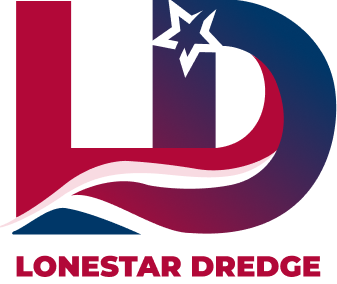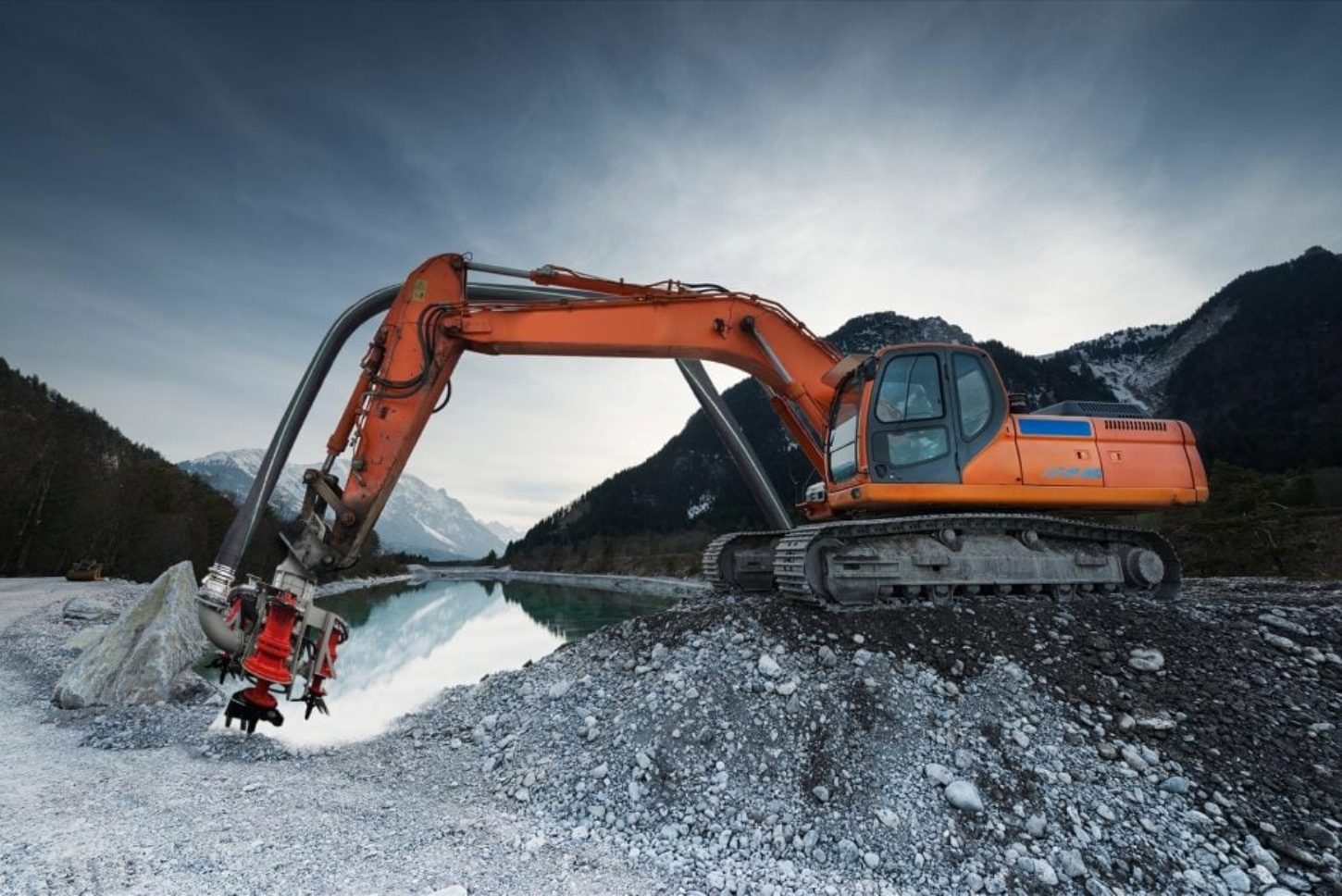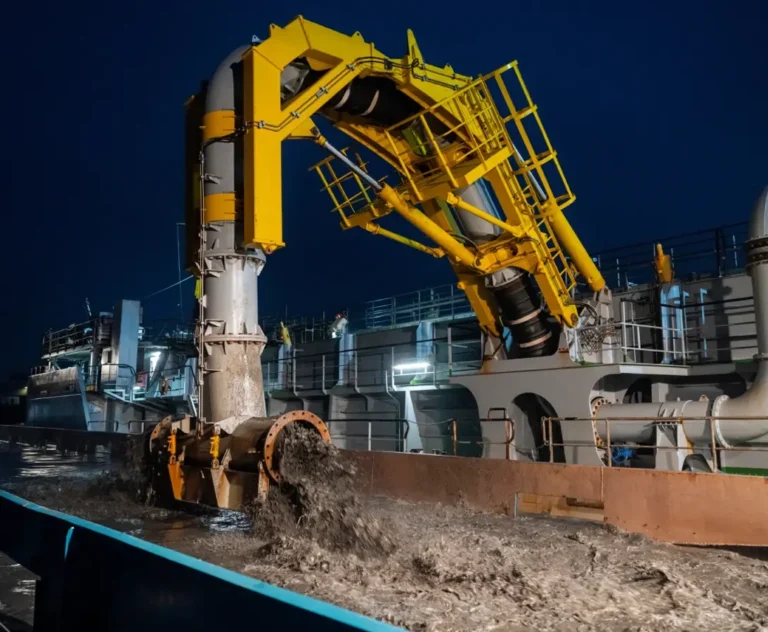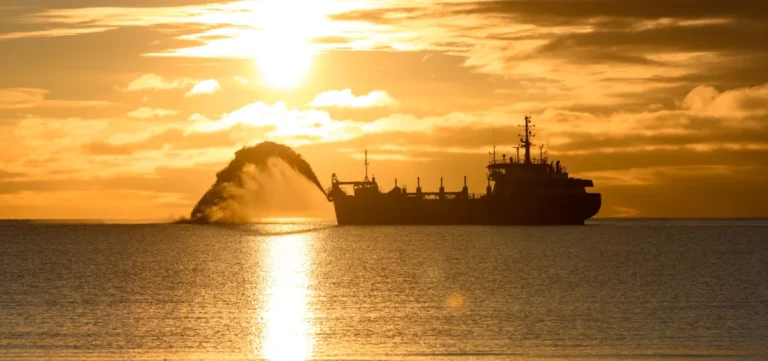Renting dredging equipment has become a strategic solution for contractors, engineers, and project managers tackling sediment removal, waterway maintenance, or industrial excavation. Whether you’re managing a short-term marine construction project or a large-scale environmental cleanup, choosing the right dredging equipment rental can significantly impact efficiency, safety, and cost control. With a wide variety of dredge equipment and configurations available—from submersible pumps to excavator-mounted systems—it’s critical to evaluate your needs, understand the rental process, and work with a trusted provider. This comprehensive checklist will guide you through the key considerations for any dredge rental project and help you avoid common pitfalls when sourcing dredging gear rental solutions.
Why Rent Instead of Buy?
For many contractors, project managers, and marine construction firms, dredging equipment rental offers a practical and cost-effective alternative to purchasing heavy-duty machinery outright. Whether you’re managing a one-time maintenance job or tackling a short-term emergency, renting dredge equipment provides financial and operational flexibility without the long-term burdens of ownership.
1. Cost Efficiency for Short-Term or One-Off Projects
Purchasing new dredging equipment can require a substantial capital investment, which is often unjustifiable for projects with limited scope or duration. With dredging equipment rental, you only pay for the time you use the equipment, eliminating large upfront costs and allowing for better budget control. This is particularly beneficial for seasonal dredging or emergency response operations where full-time ownership isn’t necessary.
2. Maintenance and Storage Benefits
Owning dredge equipment means taking full responsibility for storage, regular servicing, repairs, and replacement parts. By choosing a dredge rental model, these burdens shift to the rental provider. Many rental packages include ongoing maintenance and field support, helping you avoid downtime and keep your project on schedule, without the added cost of in-house technicians or storage yards.
3. Access to Specialized Equipment
Every dredging job is different. Some projects require submersible slurry pumps, while others demand long-reach excavator attachments or cable-deployed systems. Dredging gear rental provides access to a diverse inventory of specialized tools tailored to your job’s specific needs, without locking you into a single equipment type. This flexibility enables you to adapt to changing site conditions or project requirements in real-time.
4. Smarter Operational Decisions
When timelines are tight and resource allocation is crucial, renting dredging equipment becomes a strategic advantage. It enables contractors to scale operations up or down, test new equipment types, or respond quickly to unforeseen challenges, without waiting on capital approvals or permanent purchases.
Key Factors to Consider Before Renting Dredge Equipment

Choosing the right dredging equipment rental involves more than just selecting available machinery—it requires a deep understanding of your project’s technical requirements and environmental conditions. Before contacting a rental provider, evaluate these critical factors to ensure you’re renting the right dredge equipment for the job.
1. Project Scope and Objectives
Start by defining your project goals. Are you removing compacted sludge from a lagoon, clearing sand from a marina, or handling abrasive gravel in a mining operation? The type and volume of material you’re dealing with will directly influence your dredge rental selection.
- Material Type: Sludge, silt, sand, gravel, or slurry all require specific pump capacities and cutterhead configurations.
- Depth and Reach: Determine the maximum dredging depth required, as this determines whether a submersible pump or a long-arm attachment is necessary.
- Production Volume: Estimate daily production targets to match the output capacity of the available dredging gear rental options.
2. Environmental Constraints and Site Access
Environmental factors and physical limitations of the job site can affect the suitability of equipment.
- Restricted Access: In confined or remote locations, you may need compact or portable dredge systems.
- Sensitive Ecosystems: Work in wetlands or protected areas may require low-impact, precision dredge equipment to avoid ecological disruption.
- Infrastructure Proximity: Consider overhead clearances, shoreline development, or nearby utilities when planning deployment and anchoring.
3. Site Conditions
Understanding the physical and hydrological properties of your dredging area is essential for safe and efficient operations.
- Water Depth: Shallow sites may be better served by excavator-mounted attachments, while deep areas may require cable-deployed or diver-operated pumps.
- Sediment Type: Fine silt behaves differently than coarse gravel and affects suction performance and wear on pump components.
- Flow and Currents: Strong currents demand stable equipment and secure mooring setups to maintain efficiency and safety.
- Weather and Tide Patterns: Seasonal tides, storms, or wind conditions can impact project timing and equipment stability.
4. Permitting and Regulations
Before finalizing any dredging equipment rental, ensure compliance with all legal requirements.
- Permitting: Most dredging projects, especially those in public waterways, require permits from federal, state, or local authorities.
- Certifications: Verify if your dredging gear rental must comply with U.S. Coast Guard, EPA, or other regulatory standards.
- Reporting Obligations: Certain permits require turbidity monitoring, sediment tracking, or environmental impact documentation, which may necessitate the use of specialized equipment.
Dredging Equipment Types Available for Rental
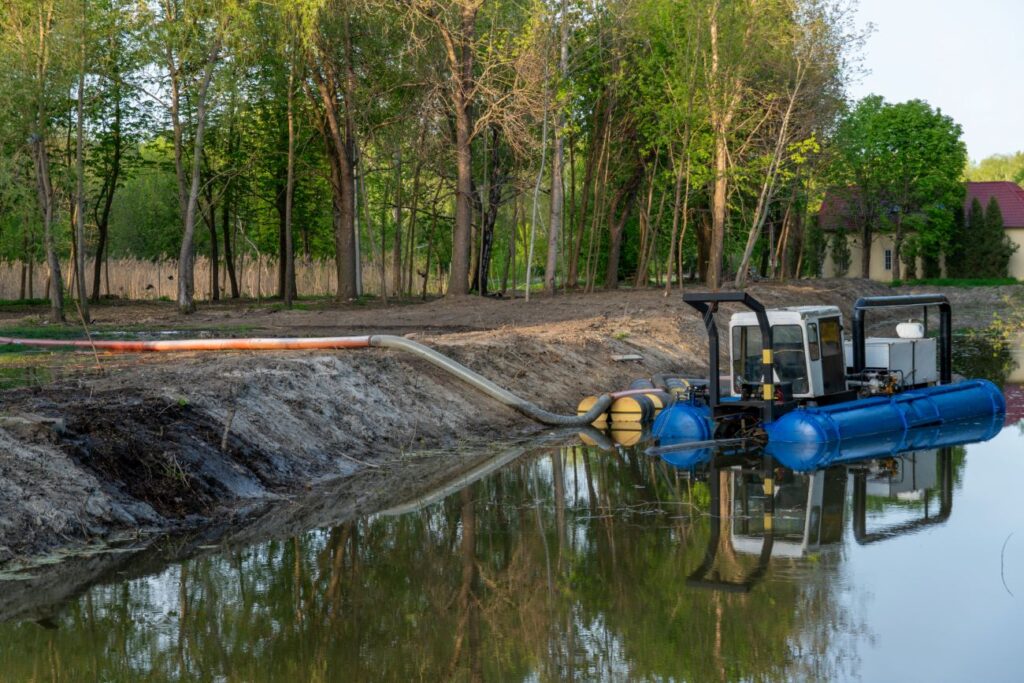
Selecting the right tools for your dredging equipment rental is essential to meet project demands and site conditions. Today’s rental providers offer a broad range of mechanical and hydraulic solutions, as well as critical support gear, to handle a variety of dredging operations. Understanding these equipment categories will help you tailor your dredge rental to the exact needs of your site.
1. Mechanical Dredging Equipment
Mechanical systems are ideal for projects requiring precision in shallow or hard-to-access areas. They are often mounted on excavators, barges, or cranes and are used for sediment removal where suction-based methods may be less effective.
- Excavator Dredge Attachments
Designed for versatility, these attachments convert standard excavators into powerful dredge equipment. Ideal for shallow water dredging, they excel in compact areas like ponds, canals, and lagoons.
- Clamshell Buckets and Draglines
Best suited for heavy-duty digging and material handling, these tools are commonly used in ports, harbors, and bulk excavation work. They lift sediment mechanically and are preferred for materials like rock or compacted clay.
2. Hydraulic Dredging Equipment
Hydraulic systems are designed for high-volume slurry movement and are favored for continuous, large-scale projects.
- Submersible Dredge Pumps
These powerful pumps are fully submerged and used for moving sediment, sludge, and slurry through discharge pipelines. They are a popular option in dredging gear rental due to their efficiency in deep or hard-to-reach locations.
- Cutterhead Dredgers
Equipped with rotating cutterheads, these dredgers break up compacted materials and feed them directly into a suction pipeline. Ideal for tough environments where material needs to be fragmented before pumping.
- Jetting and Agitation Systems
These auxiliary systems loosen fine sediments using pressurized water, making it easier to pump or collect material. They are often paired with submersible or suction pumps for enhanced performance.
3. Support Equipment
In any dredging equipment rental, support gear ensures the main system operates smoothly and efficiently.
- Floating Pipeline and Hose
These components transport dredged material from the site to a discharge area. Hose floats and anchors keep the pipeline secure on the water’s surface.
- Booster Pumps
Used to increase discharge distance, booster pumps are critical for long pipelines or high-lift projects. They maintain consistent flow and pressure during material transport.
- Dredge Monitoring Systems (RTK GPS, Sonar)
Precision systems, such as RTK GPS and sonar, are essential for achieving accurate dredging, maintaining depth control, and enabling real-time project tracking. They enhance operational safety and improve efficiency in sediment removal.
Checklist for Dredging Equipment Rental
Renting the right dredge equipment requires more than just selecting a pump or excavator—every successful project starts with a clear plan. Use the checklist below to prepare for a smooth and effective dredging equipment rental process.
1. Before Contacting a Rental Provider
Before engaging with any dredge rental company, gather essential project details to streamline the rental process and avoid costly surprises.
- Assess Site and Material Handling Needs
Understand the type of sediment you’ll be dredging (e.g., sludge, silt, sand, gravel), expected volume, and water conditions. This determines whether you’ll need a submersible pump, cutterhead dredge, or mechanical attachment.
- Set a Timeline and Budget
Determine the start and end dates of your project, taking into account the time required for mobilization, deployment, and demobilization. Create a realistic rental budget that includes not only daily or weekly rates, but also fuel, maintenance, and transportation costs.
- Review Previous Dredging Reports (If Available)
Historical site data helps in estimating production rates, anticipating challenges, and selecting the right dredging gear rental setup. Previous performance metrics can guide equipment sizing and power requirements.
2. When Reviewing Rental Options
Not all dredge equipment is created equal. Ensure the rental options align with your technical, environmental, and operational requirements.
- Is the Equipment Suited to Your Sediment Type?
Fine silt requires different pump characteristics than coarse sand or gravel. Make sure the equipment is rated for the material and density you’ll be working with.
- Power Type: Diesel, Electric, or Hydraulic
Select a power system that is compatible with your project site. Remote locations may benefit from diesel-powered units, while electric or hydraulic systems are ideal for controlled industrial environments.
- Mobility and Deployment Options
Consider how easily the equipment can be transported and installed. Options may include trailer-mounted pumps, cable-deployed dredges, or remote-operated platforms—each suited for different dredging scenarios.
3. Questions to Ask the Rental Company
Before signing a contract, clarify the full scope of what your dredging equipment rental includes:
- What Is Included in the Rental?
Does the package include all necessary accessories, such as hoses, floats, suction heads, and connection hardware? Are operators or setup technicians available?
- Are On-Site Setup and Support Services Offered?
Confirm whether the vendor provides field engineers or supervisors to assist with setup and commissioning. This can significantly reduce downtime and ensure safe deployment.
- What Are the Policies on Maintenance, Fuel, and Wear Parts?
Understand who is responsible for ongoing maintenance and how replacement parts are handled. Clarify whether fuel and lubricants are included in the price or charged separately.
4. Logistics and Deployment Checklist
Smooth execution begins with well-planned logistics. Cover the following points before delivery:
- Transportation and Delivery Timeline
Coordinate freight schedules to align with project deadlines and ensure timely delivery. Inquire about lead times, particularly for large or specialized dredge equipment.
- On-Site Assembly or Anchoring
Verify if your team will need to perform on-site assembly. Some dredge rental equipment may require anchoring systems, spud poles, or floating platforms to secure it in place.
- Operator Training or Instructions
Check if the rental includes operational training, either on-site or remotely. Clear instructions on start-up, shutdown, and troubleshooting procedures are essential for safe and efficient dredging.
Hidden Costs and Budget Considerations

When planning a dredging equipment rental, it’s easy to focus solely on the daily or weekly rental rate. However, the total cost of renting dredge equipment often includes several hidden or variable expenses that can significantly affect your budget if not anticipated upfront. A clear understanding of these cost drivers ensures you stay within your financial parameters and avoid unexpected overruns.
1. Mobilization and Demobilization Fees
Getting heavy dredge equipment to and from your job site can be one of the most expensive aspects of any dredge rental project. Mobilization fees cover transportation, offloading, and initial setup, while demobilization includes disassembly and return logistics. These charges are typically calculated based on equipment size, distance, and site accessibility, and can vary widely depending on project location.
2. Insurance, Fuel, and Consumables
Many dredging gear rental agreements require the renter to carry liability or equipment insurance during the rental period. Additionally, fuel consumption—especially for diesel-powered units—can represent a major operating cost, particularly in high-production applications. Don’t forget other consumables such as hydraulic fluids, lubricants, and wear liners that may not be included in the base rental fee.
3. Emergency Support or Repair Coverage
If your rental contract doesn’t include provisions for emergency repair services or technical troubleshooting, you may be liable for both downtime and repair costs. Clarify whether the dredge rental provider offers 24/7 support and whether spare parts or service calls are billed separately. Unexpected failures without coverage can delay operations and inflate your project budget.
4. Operator or Technician Labor (If Included)
Some dredging equipment rental agreements offer optional or bundled labor support, such as certified equipment operators or field technicians. While this can streamline deployment and ensure proper usage, it’s important to understand how labor costs are structured—hourly, daily, or project-based—and whether travel or lodging expenses are additional.
Safety and Operational Readiness
Safety is a critical component of any dredging project, especially when working with high-powered machinery in aquatic or industrial environments. Before deploying any dredge equipment, operators and project managers must ensure that all safety and operational readiness protocols are in place. A well-prepared site reduces the risk of accidents, equipment damage, and costly delays, especially when using dredging gear rental assets that may be unfamiliar to your team.
1. Safety Protocols and Personal Protective Equipment (PPE)
Every dredging equipment rental project should begin with a comprehensive safety briefing. Establish clear procedures for working around moving parts, pressurized lines, and energized systems to ensure safety. Rental providers often supply general safety guidelines. Still, it’s your responsibility to enforce proper PPE use, including:
- Hard hats and safety boots
- Flotation devices for personnel near or on the water
- High-visibility clothing
- Gloves and eye protection
- Hearing protection around diesel-powered dredge equipment
Implementing a site-specific safety plan ensures compliance with OSHA, MSHA, or local marine regulations.
2. Inspection Procedures Before Startup
Before operating any rented dredge equipment, a thorough pre-startup inspection should be conducted. This includes:
- Verifying all hydraulic and electrical connections are secure
- Checking for visible signs of wear, damage, or leaks
- Ensuring that anchor points, floats, and hoses are properly deployed
- Reviewing fuel levels, filter status, and lubrication systems
A thorough inspection ensures that the dredge rental equipment is in optimal working condition and prevents operational downtime due to preventable issues.
3. Emergency Shutdown Procedures
Unexpected events—such as a hydraulic line rupture, power failure, or environmental hazard—can occur without warning. All operators and supervisors must be trained in emergency shutdown protocols for the specific dredging gear rental in use.
Make sure the rental provider supplies documentation for all emergency stop systems, cutoff valves, and disconnect switches. Post emergency procedures in visible locations near control stations and maintain a clear evacuation route, especially when operations are taking place on or near water.
Returning the Equipment: What to Expect
Once your dredging project is complete, the return process is a key phase of the dredging equipment rental agreement. Ensuring a smooth return helps you avoid unnecessary charges, preserve vendor relationships, and close out your project on time and within budget. Most dredge rental providers will outline expectations in the rental contract; however, it’s essential to be proactive in preparing the equipment for handoff.
1. Cleaning and Decontamination Expectations
Before returning any dredge equipment, it must be thoroughly cleaned and decontaminated according to the rental provider’s standards. Sediment buildup, fuel residue, and chemical contaminants should be removed from all hoses, pumps, and mechanical components. If equipment was used in saltwater or contaminated sites, additional flushing or neutralization may be required.
Failure to meet cleaning requirements could result in cleaning fees or delays in equipment acceptance. Ask your dredging gear rental provider if they offer guidelines or services for approved cleaning procedures.
2. Damage Inspections
Upon return, the rental provider will conduct a full inspection of the dredge equipment. This includes assessing structural components, seals, hoses, and any wear parts for damage or excessive use. It’s advisable to perform a self-inspection before pickup or drop-off and document the condition with photos or video.
Normal wear and tear is typically expected with dredging equipment rental; however, visible damage—such as cracked impellers, bent frames, or burned-out motors—may result in additional repair charges.
3. Final Cost Reconciliation
The final invoice will include not only the base rental fee but also any additional charges incurred during the rental period. This may cover fuel usage, cleaning services, repairs, late returns, or extended rental time. Review the contract terms and conduct a final reconciliation with the provider to ensure accuracy and prevent disputes.
A detailed closeout process is essential for efficiently and on good terms wrapping up your dredge rental with your vendor.
How to Choose the Right Dredging Equipment Rental Partner
Selecting the right vendor for your dredging equipment rental can significantly impact the success of your projects. From reliability and equipment quality to service responsiveness, the right partner should offer more than just machines—they should provide confidence, expertise, and operational support.
1. Look for Specialization in Dredge Equipment and Dredging Gear Rental
Not all equipment rental companies have deep knowledge of dredging operations. Prioritize providers that specialize in dredge equipment and understand the demands of sediment removal, slurry pumping, and marine construction. A vendor with a focused inventory of dredging gear rental options is more likely to recommend equipment tailored to your material type, depth, and flow requirements. They can also assist with site evaluations and operational planning.
2. Check Reviews, Certifications, and Equipment Condition
Before committing to a dredge rental, research the company’s reputation. Look for customer testimonials, case examples (if available), and online reviews that speak to the vendor’s reliability and service quality. Make sure their dredge equipment meets industry standards and is regularly inspected and maintained.
Ask whether they offer modern, low-hour machines or legacy units that may be more prone to failure. Reputable providers will be transparent about the age of their equipment, maintenance logs, and compliance with safety regulations.
3. Transparent Pricing and Strong Customer Support
Clarity in pricing is essential when comparing dredging equipment rental providers. Look for a company that offers detailed quotes outlining base rates, optional accessories, delivery charges, and terms for overages or emergency service. Avoid vendors that are vague or reluctant to put everything in writing.
Equally important is customer support. Select a partner that can offer technical guidance, remote assistance, and rapid-response field support. A vendor that actively communicates before, during, and after your rental period will help minimize downtime and maximize performance.
Final Thoughts
A successful dredging project begins with selecting the right rental equipment and partner. By following a clear checklist—covering everything from project scope and site conditions to support services and hidden costs—you can make more informed decisions, mitigate risk, and stay on budget. Whether you’re operating in open water, confined spaces, or environmentally sensitive areas, a well-planned dredging equipment rental strategy ensures you get the most out of your dredge equipment investment. Use this guide to confidently manage your next dredge rental, maximize uptime, and deliver results that meet both performance goals and regulatory standards.
